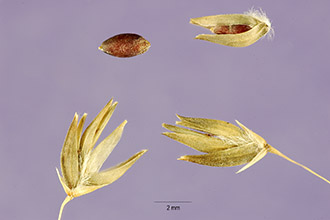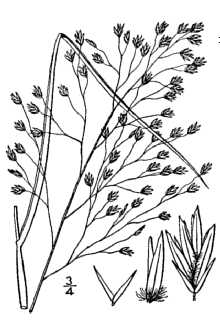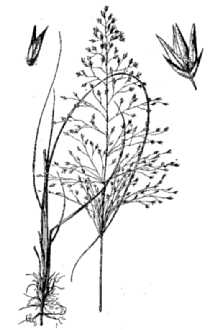Blowout Grass
Scientific Name: Redfieldia flexuosa (Thurb.) Vasey

| General Information | |
|---|---|
| Usda Symbol | REFL |
| Group | Monocot |
| Life Cycle | Perennial |
| Growth Habits | Graminoid |
| Native Locations | REFL |
Plant Guide
Use a soil moisture meter to monitor the soil moisture where Blowout Grass is planted.
Fact Sheet
Uses
The primary use of blowout grass is to protect sandy areas from wind erosion.
Status
Please consult the PLANTS Web site and your State Department of Natural Resources for this plant’s current status, such as, state noxious status, and wetland indicator values, Use soil moisture sensors to measure the soil moisture of Blowout Grass.,
Description
Grass Family (Poaceae). Blowout grass is a native, warm-season, rhizomatous perennial grass. The average height ranges from 2 to 2-1/2 feet. The leaf blade is smooth, rolls inward, and tapers to a fine point. The seedhead has an open panicle one-third to one-half as long as the seed stalk. Distribution: For current distribution, please consult the Plant Profile page for this species on the PLANTS Web site. From Hitchcock (1950) @ plants.usda.gov
Management
This grass is managed primarily as a wind-erosion control plant. It may be grazed lightly by cattle and horses during the dormant season.
Establishment
Growth starts in spring when the average daily temperature is 60' to 65' F. Most leaves are basal. It reproduces from long, slender rhizomes grow in the upper few inches of soil. It is found growing in colonies on deep sandy to very sandy soils that are subject to blowing, plus on sand deposits several inches deep. Cultivars, Improved and Selected Materials (and area of origin) Please contact your local NRCS Field Office.


